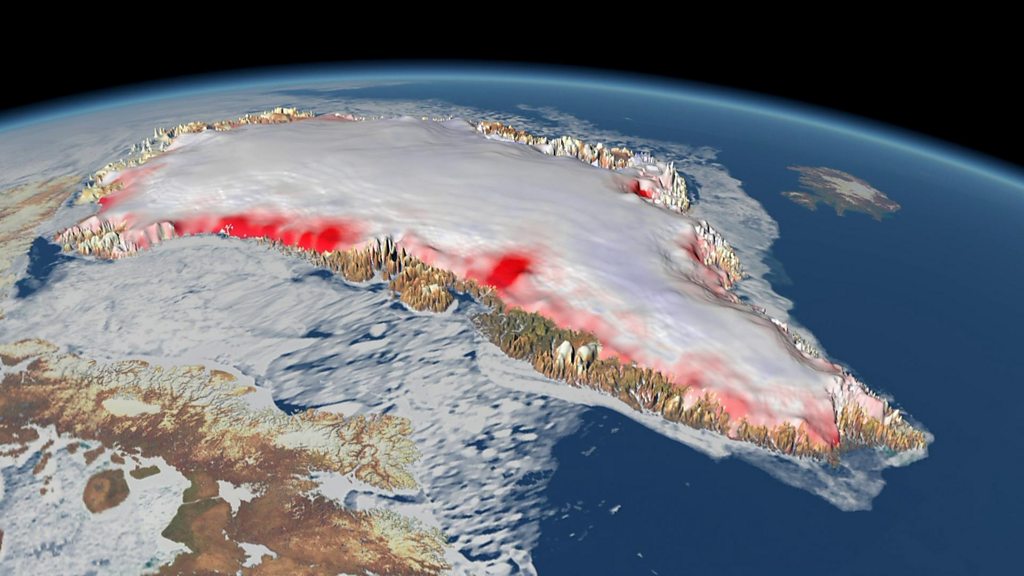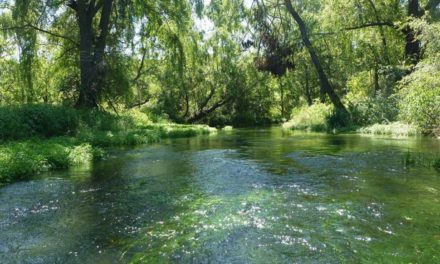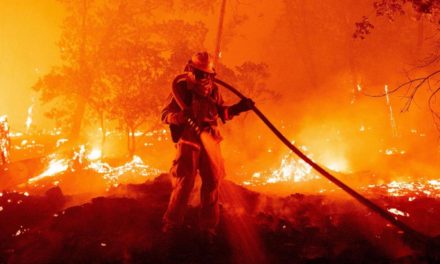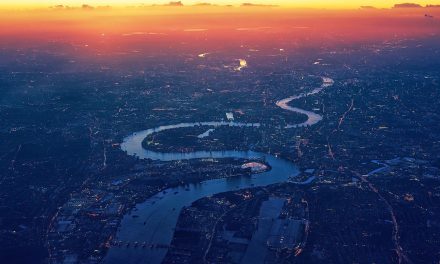Soaring temperatures, continued drought, wildfires, extreme weather and flooding with our sea level on the rise, this was all forecast by climate experts decades ago. Their predictions are now slowly but surely becoming a reality as the Arctic Ice Pack melts in the North, with the effects felt far to the South.
The World Skating on Thin Ice
Greenland’s ice sheet may have melted beyond reversal, with the ice likely to disappear regardless of any efforts to reduce climate change, as the ice sheet will more than likely now only gain mass every 100 years or so.
As warmer temperatures persist, the Greenland ice sheet, which is three times the size of Texas, is in increasing danger of melting completely. This could cause sea levels to go up by 20 feet, enough to swamp many coastal cities around the world.
Glaciers on Greenland have shrunk so much that even if global warming were to stop today, the ice sheet would continue to melt. This effectively means that the situation of Greenland’s glaciers are at the point of no return, where the snowfall that replenishes the ice sheet each year cannot keep up with the ice that is flowing into the ocean from these glaciers.
The average sea level worldwide has risen by about 7 inches over the last 100 years. It is set to continue rising, endangering coastal cities and island nations by exacerbating coastal flooding and making devastating weather events, like hurricanes, even more likely. The Greenland glacial melt is a major factor in the prediction of rising sea levels; if it melts entirely, global sea levels could rise triggering disastrous flooding globally.
Also Read: 40% of Greenland Ice Melts in One Day
Furthermore, the arctic ice melt is flooding one of the region’s significant ocean currents with fresh water, which scientists believe could have a ripple effect across the Atlantic and lead to a cooler Western Europe.
Following a record-breaking heatwave in June, fires have raged across Siberia, burning an area larger than Greece and contributing to the already alarming rate at which permafrost is melting.
Furthermore, authorities in Sudan have declared a national state of emergency for the following three months with the country being a natural disaster zone after flooding that has killed dozens of people.
Climate Change
Changes in the Arctic climate are significant because the region acts as a refrigerator for the rest of the world—it helps keep the planet cool. The changes in climate that we see today are mostly affected by human activity, and it is climate change that drives the melting of glaciers and subsequent rise in sea level.
“The Arctic is an incredibly important system in the global climate system. So just like the Amazon is the lungs of the world, the Arctic is like our circulation system and feeds into global climate change everywhere,” the World Economic Forum says.
Together, the Antarctic and Greenland (Arctic) ice sheets contain more than 99 per cent of the freshwater ice on Earth. Although gradual, the melting of these ice sheets can prove catastrophic for both humans and animals alike. The World Wildlife Fund has identified 11 species of animals directly threatened by the steady Arctic melt including walrus, reindeer, polar bear, orcas and the arctic fox.
“The Arctic summer of 2020 is one that has been marked by raging fires in the Far North, with smoke extending more than 1,000 miles downwind, along with alarming new temperature records and ice melt. While rapid Arctic climate change is not exactly news — the region is warming at about three times the rate of the rest of the world — the manifestations of this phenomenon are increasing in severity, scope and societal consequences” – Washington Post, June 2020
Thawing Permafrost
Rising temperatures in the Arctic are also causing frozen ground, called permafrost, to thaw in Alaska, Canada and Siberia. This is a great cause for concern as permafrost traps large amounts of carbon. When permafrost warms up, it starts releasing the carbon in the form of two powerful heat-trapping greenhouse gases, methane and carbon dioxide, further exacerbating global warming.
Featured image credit: BBC
- Britain Set to Release the First Approved COVID-19 Vaccine in Coming Weeks - 6th December 2020
- 11 Most Cinematic Couples to Ever Grace the Silver Screen - 18th November 2020
- Iconic Brands That Have Prospered for Over 100 Years - 16th November 2020






